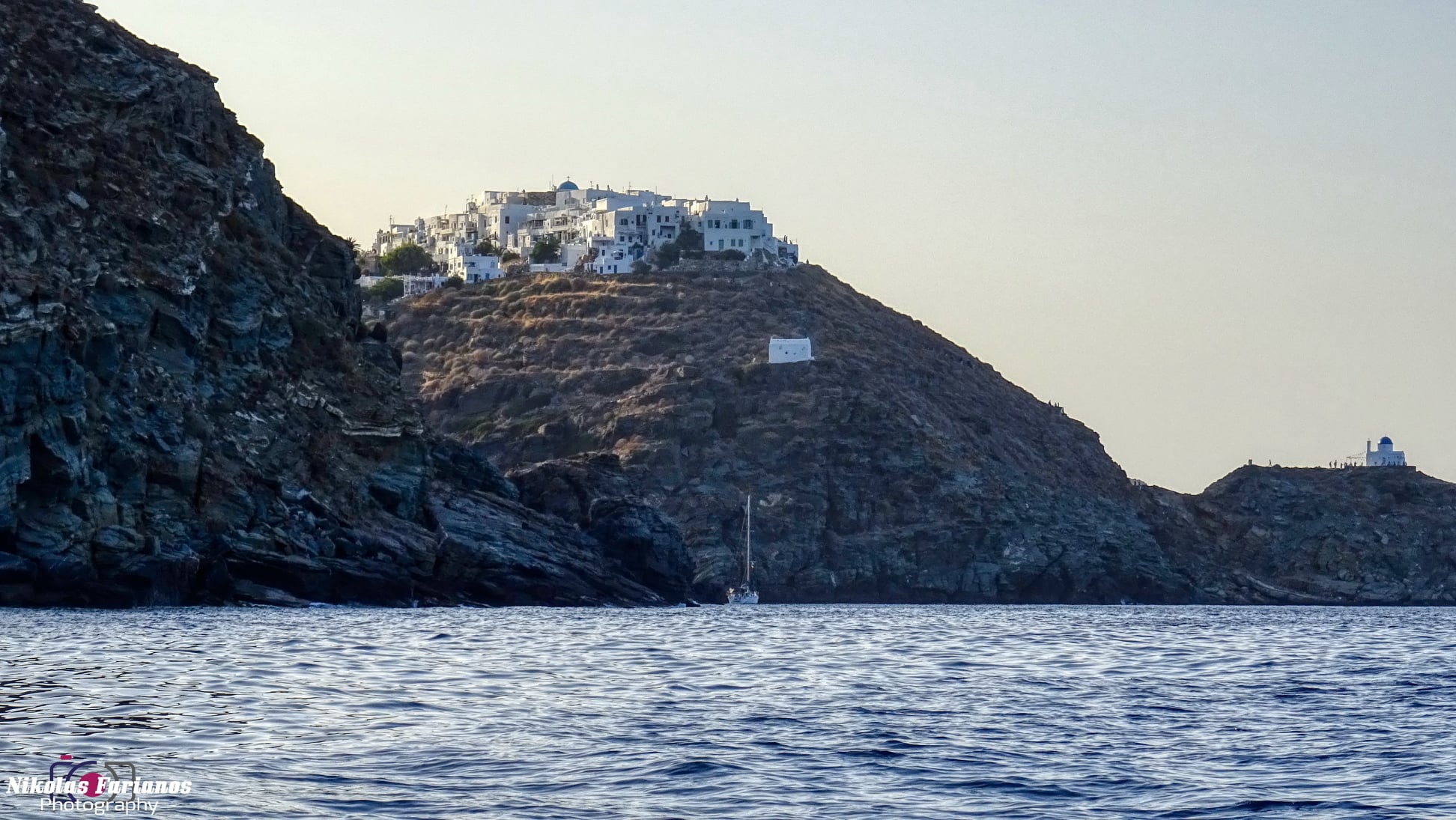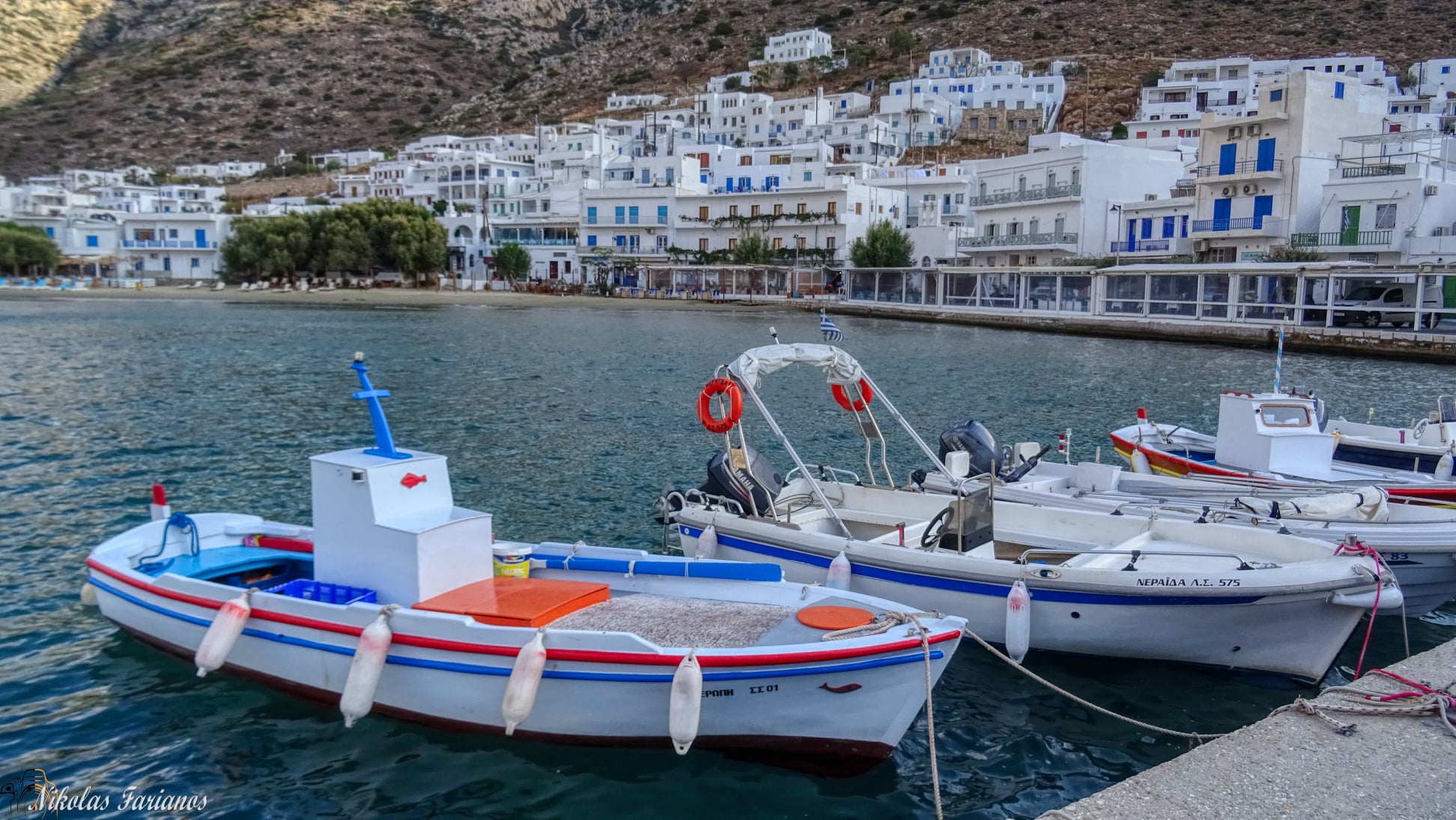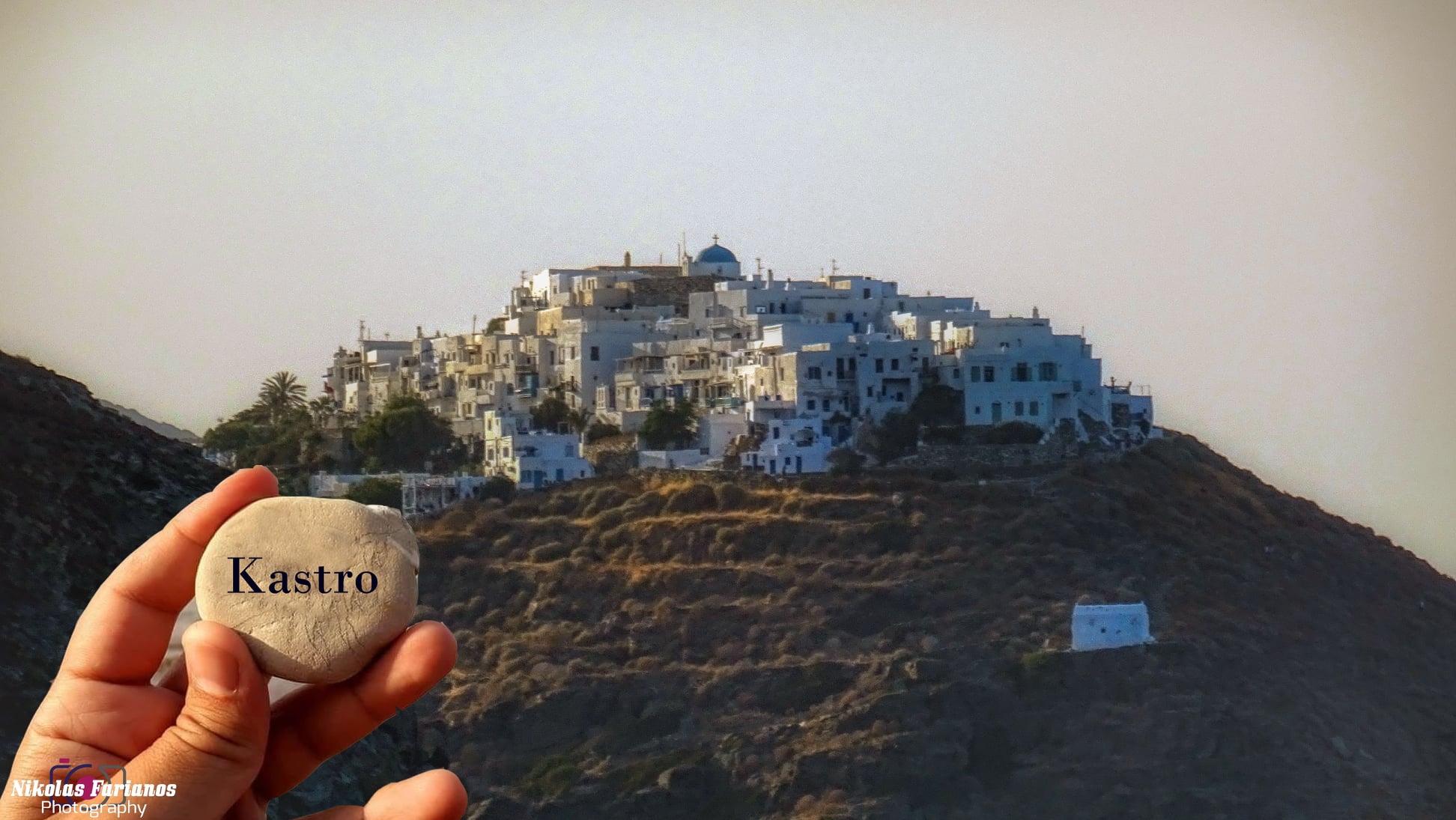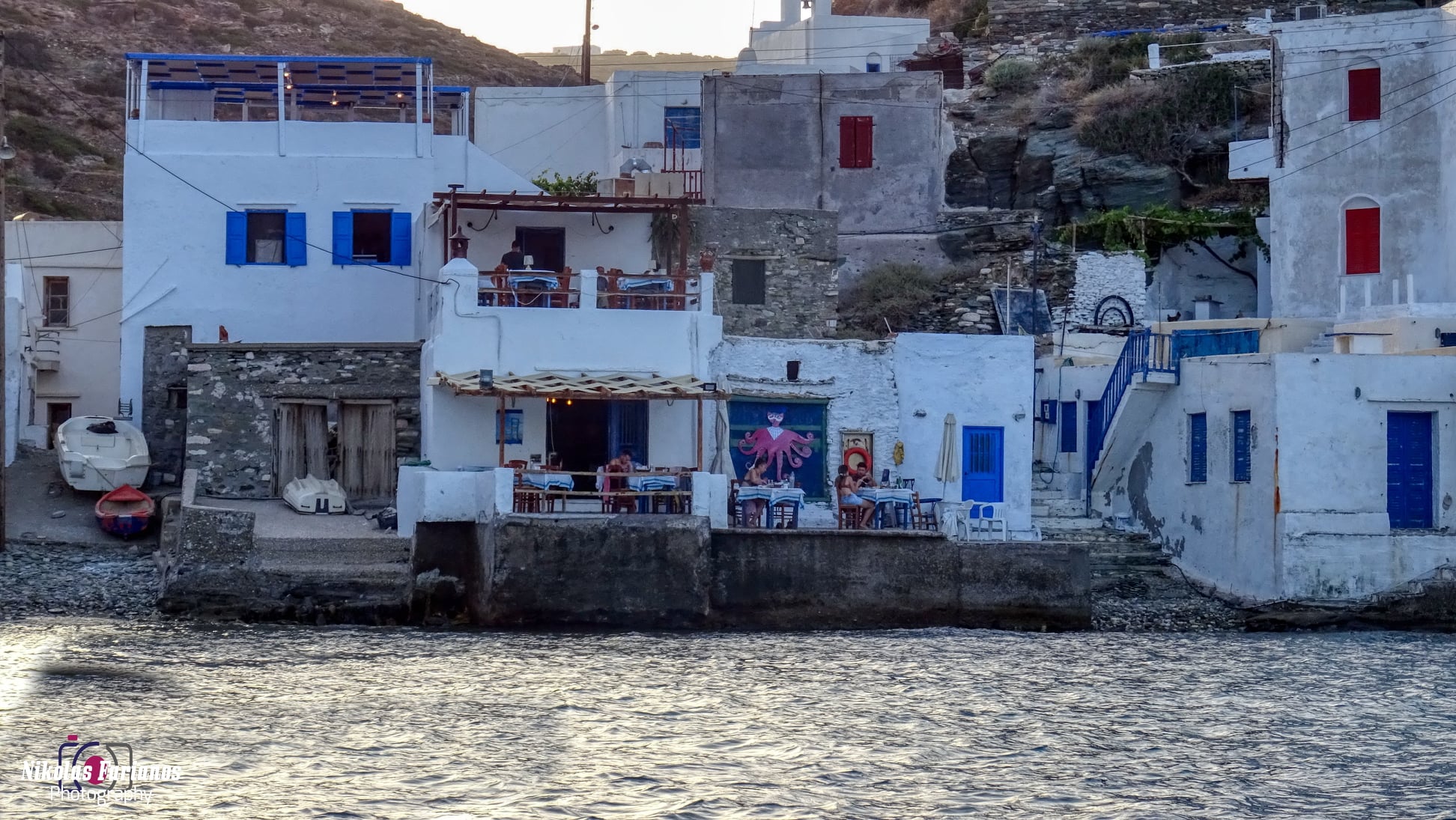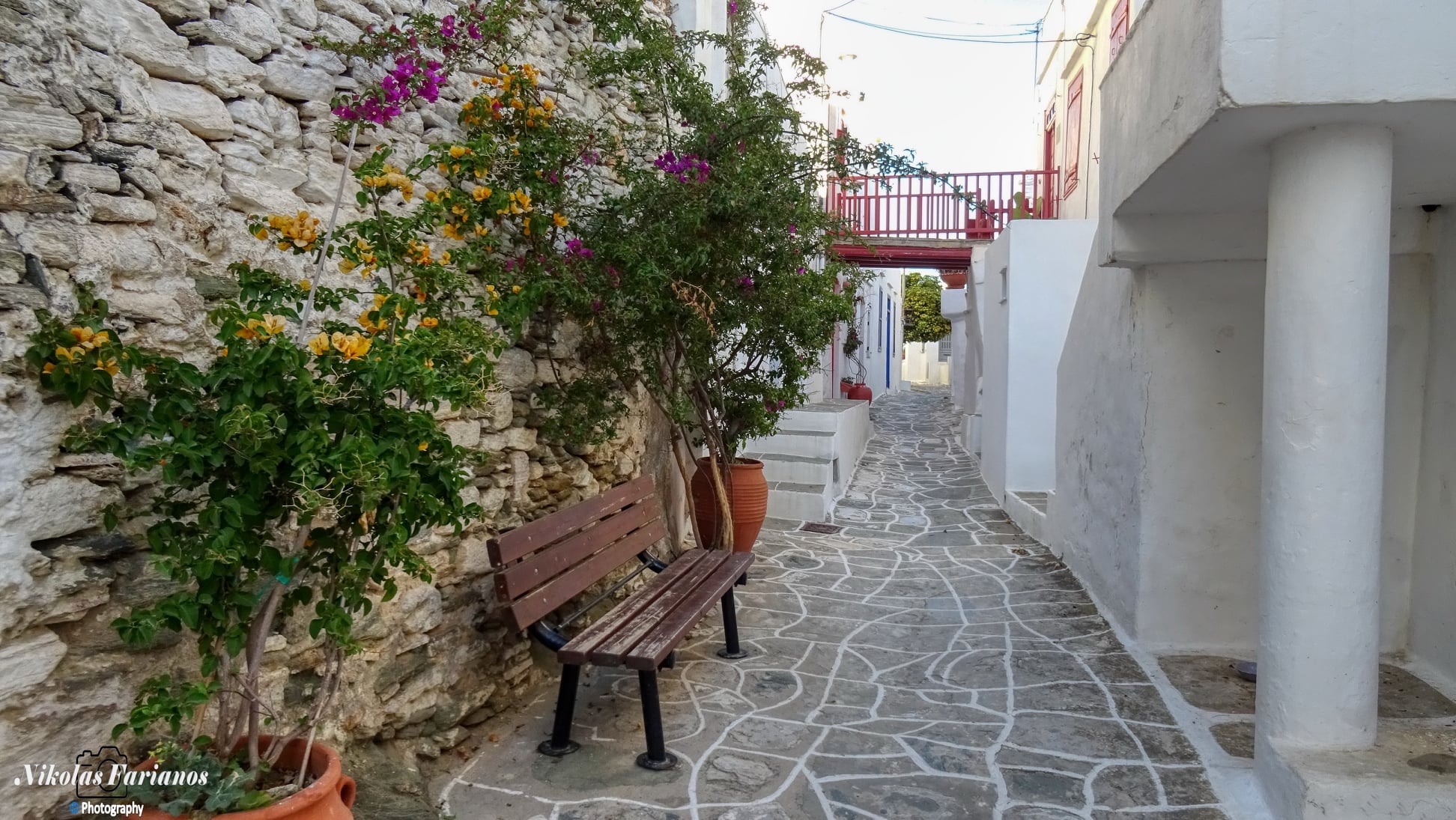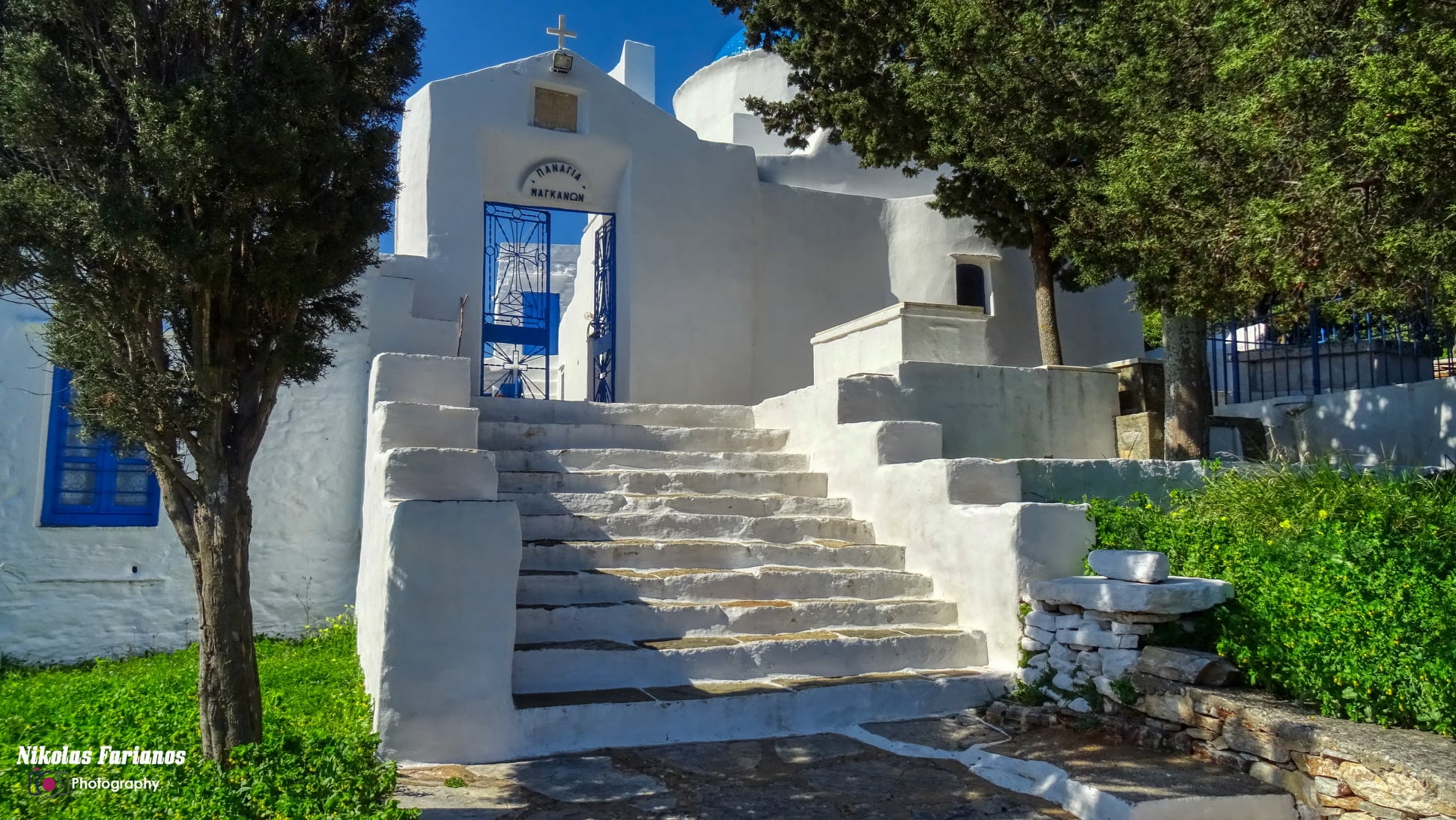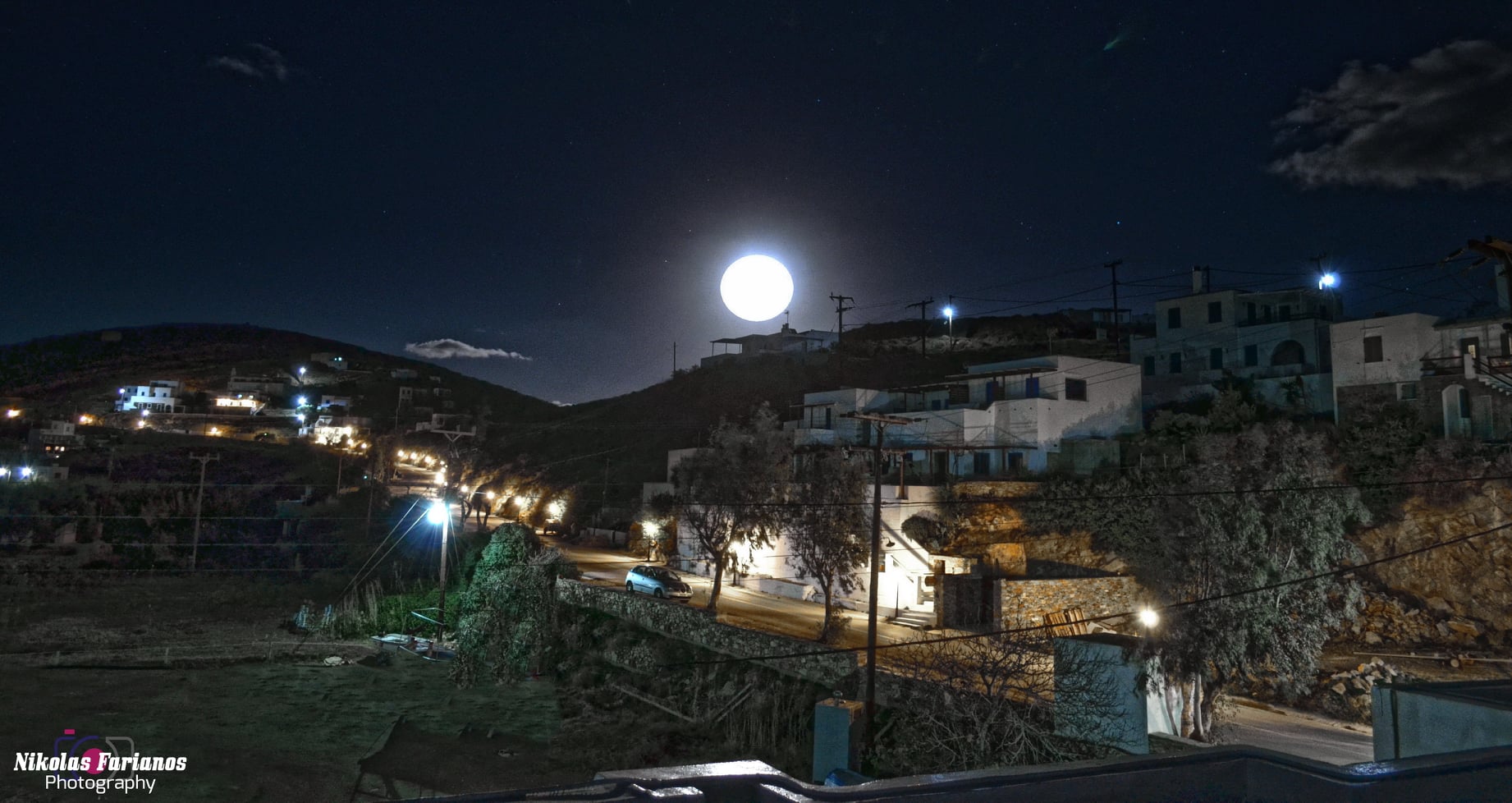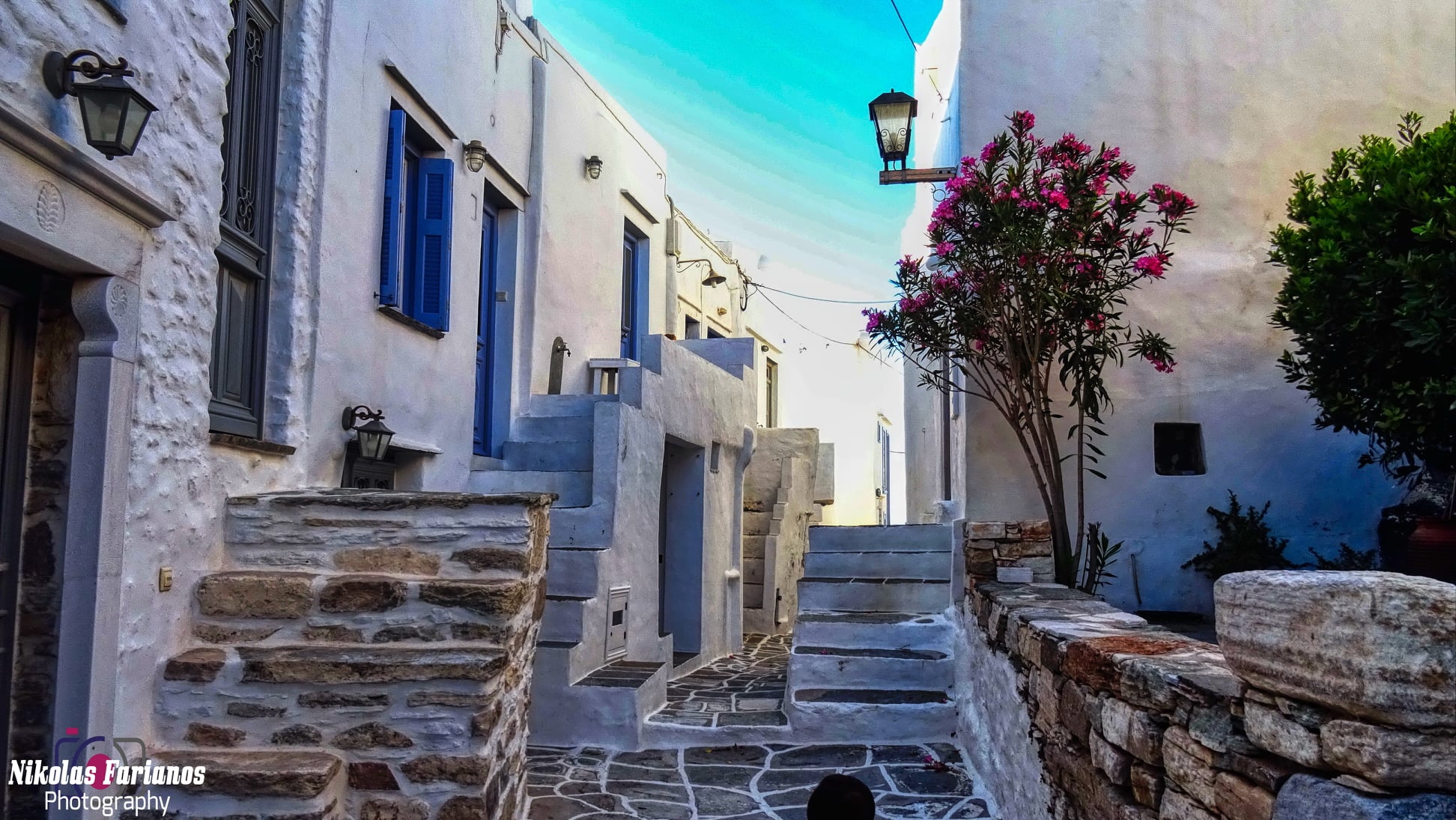sifnos
The ultimate call for a journey through nature, flavour and beauty
sifnos, cyclades, greece
 The west Cyclades island of tradition full of wild rocks, white houses, blue vaults of the churches, endless paths, wonderful beaches and picturesque architecture.
The west Cyclades island of tradition full of wild rocks, white houses, blue vaults of the churches, endless paths, wonderful beaches and picturesque architecture.
Apollonia, the capital, is amphitheatrically built on three hills in the middle of the island surrounded by the beautiful villages of Artemon, Ano and Kato Petali, Katavati and Exambela. On the west, the port of Kamares, Vathi and Herronissos beaches. On the east the beaches of Platis Gialos and Faros, the breathtaking Monastery of Chryssopigi and the popular village of Kastro with its archeological museum.
In the Antiquity, Sifnos had mines of silver and gold and was prosperous. The natives fought in the Persian wars, later they were subject to the Macedons, the Ptolemies and the Romans. After many raids during the Byzantine Age, the Venetians installed, then the Turcs until the revolution of 1821 when Sifnos gained its freedom.
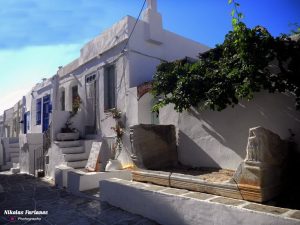 The entire island is an archeological monument with the highlight of St. Andrea’s hill on top of which one can admire the ruins of Mycenean era structures. There are also fifty fine ancient castles, round in shape, dispersed in all over the island, where fire and smoke were used in the past for communication and warnings about enemies approaching.
The entire island is an archeological monument with the highlight of St. Andrea’s hill on top of which one can admire the ruins of Mycenean era structures. There are also fifty fine ancient castles, round in shape, dispersed in all over the island, where fire and smoke were used in the past for communication and warnings about enemies approaching.
The island has unique tastes that make it stand out such as traditional kinds of cheese, chick pea soup and croquettes, caper salad and the Mastelo-roast meat cooked in pottery utensil. In general, here the tradition of pottery is still alive and vivid as it used to be in the past.
In addition, plenty are the paths that await the excursionists and most of them lead to country churches and monasteries where traditional festivities with mutual meals take place, full of dancing, singing and reciting poems. The island keeps its customs alive!
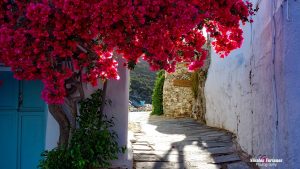
As for entertainment in SIfnos, there are restaurants of all kinds, confectioneries, cafeterias and bars in almost every built up area. One can also find gift shops, pottery products shops and jewellery workshops.
In the summer, the island is every day connected with Piraeus. For the rest of the year, the frequency of the itineraries depends on the season.
Sifnos is ready to offer you unforgettable moments!
trails
A narrow, stone-paved path which, albeit rough at times, connects to mountain peaks and settlements of the island. The scenery is dominated by the dry-stone walls that create the famous terraces. Nature and rural architecture converge along the route. Intoxicating fragrances complement the fresh air, and the sun accompanies hikers on their journey.
 Given the significant number of trails on this island, it was only natural that they would eventually be appropriately recorded and marked in modern times. The extended network of trails on Sifnos is a substantial reason for people to visit and appreciate for themselves the liberating experience, offered by their chosen route. In this moment of calm, one can take in the plants, herbs, flowers and settlements against the endless blue of the sky and the sea.
Given the significant number of trails on this island, it was only natural that they would eventually be appropriately recorded and marked in modern times. The extended network of trails on Sifnos is a substantial reason for people to visit and appreciate for themselves the liberating experience, offered by their chosen route. In this moment of calm, one can take in the plants, herbs, flowers and settlements against the endless blue of the sky and the sea.
.
ARCHITECTURE
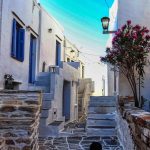 Imagine a small rock in the midst of the archipelago, inhabited by simple, frugal people; livestock keepers, potters and farmers. They build the homes that house them with their own hands. Rock, earth, water, limestone, cedarwood, seaweed and bamboo cane are their building materials. The result: narrow rectangular white houses that still stand in evidence of the toil of previous generations. They are accessed through cobbled streets, pristine, with bright white-washed lines between the slate flagstones. Stone benches are built onto almost every house for the neighbors to gather , chat and communicate.
Imagine a small rock in the midst of the archipelago, inhabited by simple, frugal people; livestock keepers, potters and farmers. They build the homes that house them with their own hands. Rock, earth, water, limestone, cedarwood, seaweed and bamboo cane are their building materials. The result: narrow rectangular white houses that still stand in evidence of the toil of previous generations. They are accessed through cobbled streets, pristine, with bright white-washed lines between the slate flagstones. Stone benches are built onto almost every house for the neighbors to gather , chat and communicate.
The island’s so-called “inconspicuous” architecture is famous. Its distinctive simplicity marks all dwellings throughout the land. Surviving examples of the island’s architectural history can also be found in the main commercial area. Dignity and beauty reflect the land’s history, which stretches back centuries.
CERAMIC ART
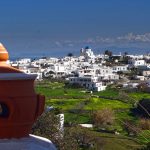 Pottery wheels, earth, water, clay, fire, and the potter’s body. Nature meets man in a magnificent encounter, creating useful objects and decorative items to cover everyday needs and make life more beautiful. Hands place clay on the wheel and feet spin it, so that the circle may turn and creation may begin. The experienced hands of the island’s potters breathe life into pots, cups, tsikalia (cooking pots), flari (earthen chimneys), plates, bowls – in short, anything the mind can think of.
Pottery wheels, earth, water, clay, fire, and the potter’s body. Nature meets man in a magnificent encounter, creating useful objects and decorative items to cover everyday needs and make life more beautiful. Hands place clay on the wheel and feet spin it, so that the circle may turn and creation may begin. The experienced hands of the island’s potters breathe life into pots, cups, tsikalia (cooking pots), flari (earthen chimneys), plates, bowls – in short, anything the mind can think of.
 Earth, water, fire and centuries-old local knowledge of pottery mark this small place as the island of ceramic art. The most recognizable connection between pottery and functionality can be seen in the typical image of locals holding the tsikali filled with chickpea stew as they prepare to set it on the Sunday table. Family and guests take their seats around the table. With the tsikali still piping hot straight from the wood-fired oven, the wine is served. The ritual of the meal begins …
Earth, water, fire and centuries-old local knowledge of pottery mark this small place as the island of ceramic art. The most recognizable connection between pottery and functionality can be seen in the typical image of locals holding the tsikali filled with chickpea stew as they prepare to set it on the Sunday table. Family and guests take their seats around the table. With the tsikali still piping hot straight from the wood-fired oven, the wine is served. The ritual of the meal begins …
.
PANIGYRI (FESTIVITY)
 Pan (all) and agyris (gathering). A coming, a gathering for all to celebrate the honoured Saint. Each day marks a new celebration on the island. The faithful, as well as those simply adhering to tradition follow a path – usually on foot – to arrive at the church, which is whitewashed and decorated with flags.
Pan (all) and agyris (gathering). A coming, a gathering for all to celebrate the honoured Saint. Each day marks a new celebration on the island. The faithful, as well as those simply adhering to tradition follow a path – usually on foot – to arrive at the church, which is whitewashed and decorated with flags.
The Saint’s icon, adorned with flowers, is places at the center of the temple by the panigyras, the person who kept it at their home for an entire year, waiting for this sacred moment to honour it. The liturgy begins.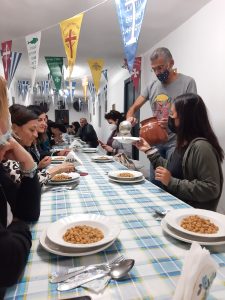 Then, the serenity of the liturgy gives its place to the celebration. People assemble around the common table. A meal of chickpea stew, wine and lamb is served before people rejoice to the sound of music and singing, which gives the signal for an all-night feast that has just begun.
Then, the serenity of the liturgy gives its place to the celebration. People assemble around the common table. A meal of chickpea stew, wine and lamb is served before people rejoice to the sound of music and singing, which gives the signal for an all-night feast that has just begun.
All pictures of Sifnos in this page (and in the entire website) are by @Nikolas Farianos

